
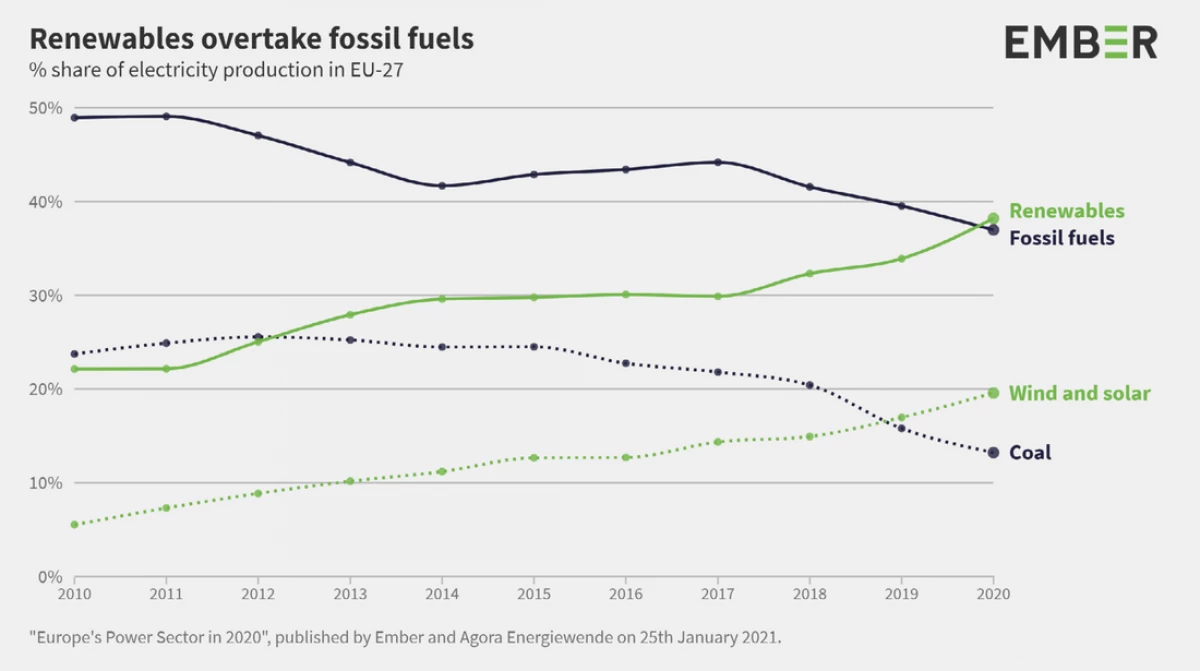


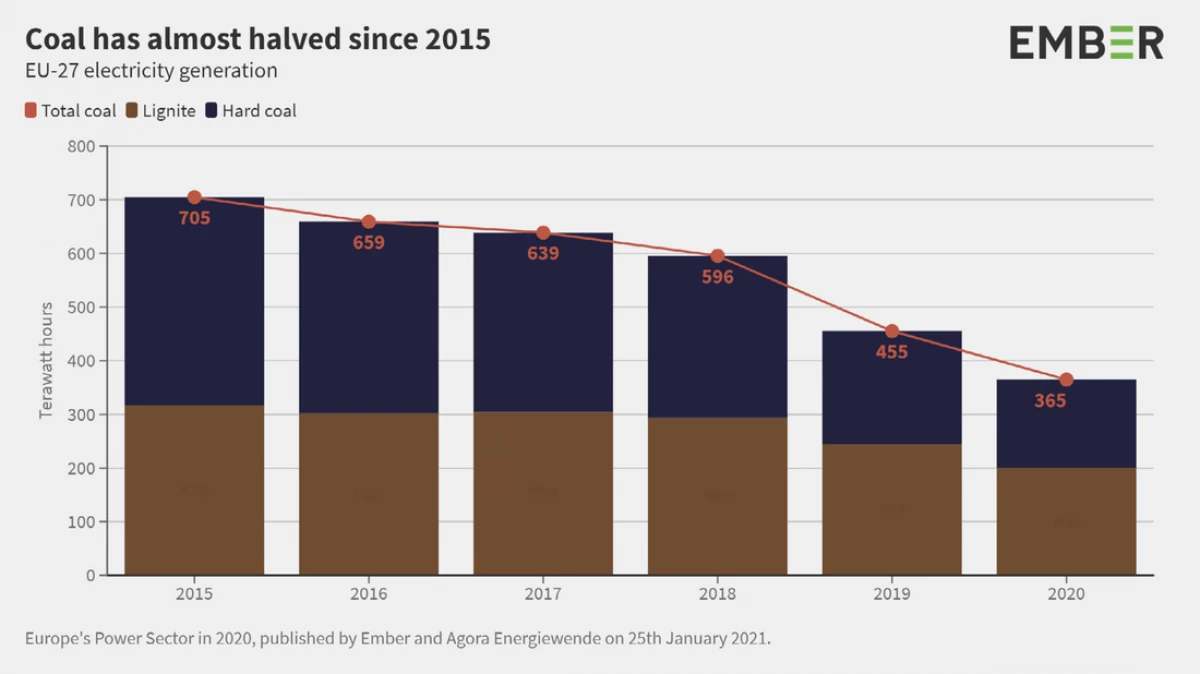
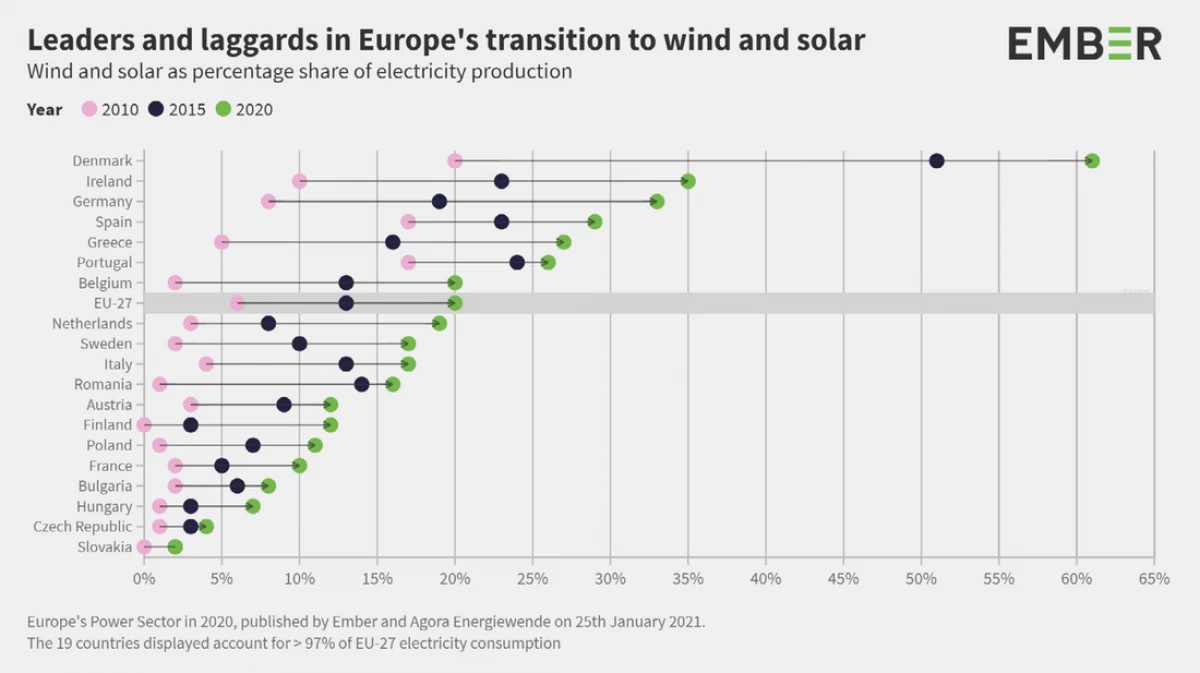

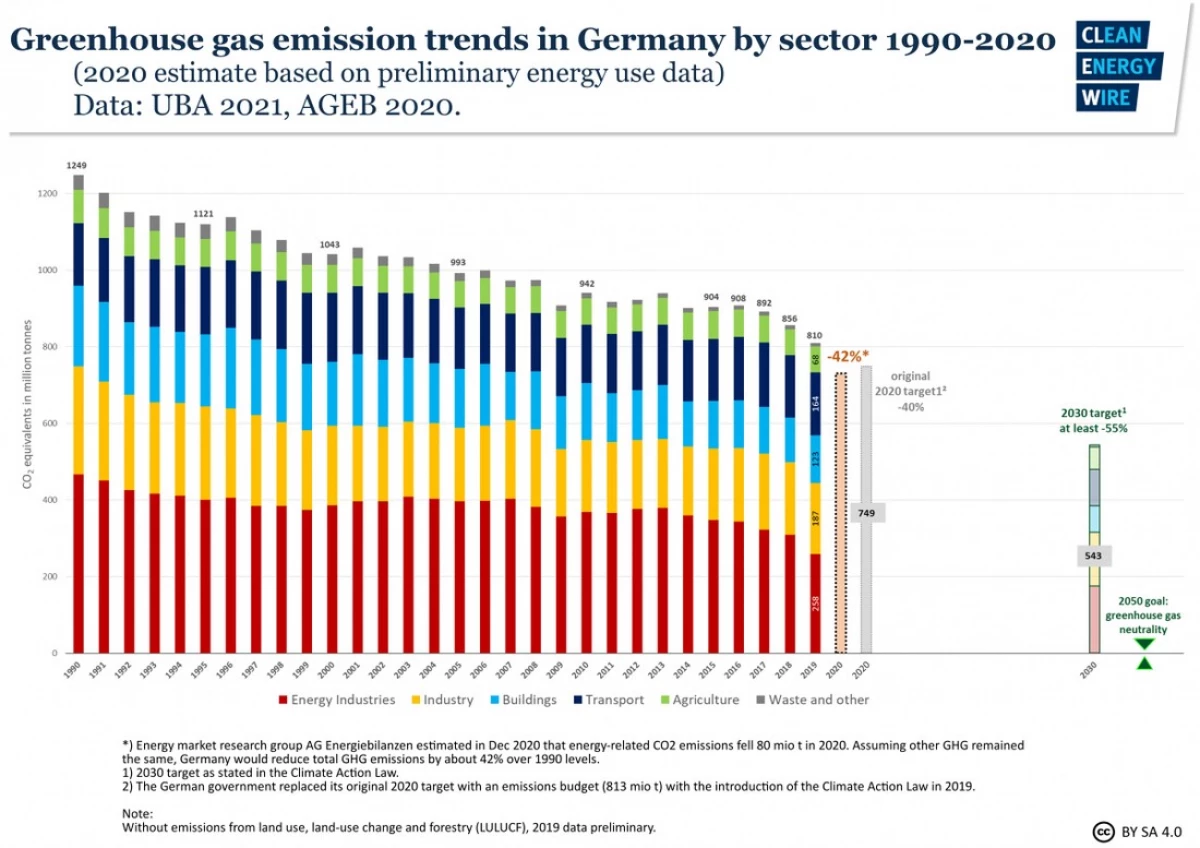
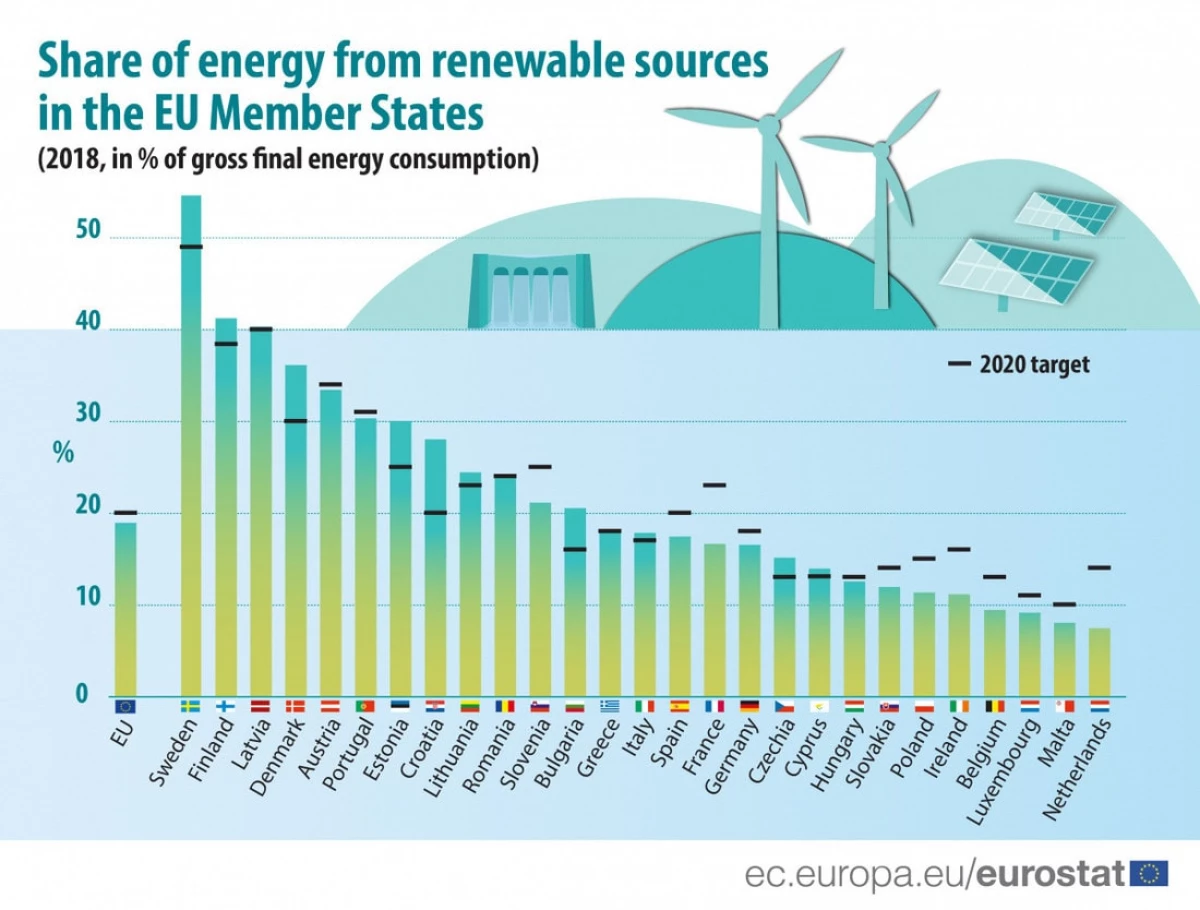
In 2020, energy generation from renewable sources in Europe for the first time in history exceeded the production of fossil fuels. For the second year, the wind and the sun are bypassed by the production of coal. This is largely due to a coronavirus pandemic and a decline in production, which was observed in all sectors of the economy. What are the first results of the transition to "green" energy? And will Europe be able to become climatically neutral by 2050 by decreasing greenhouse gas emissions?
Last year, the wind and the Sun generated the fifth of European energy. At the same time, these two segments are the only "green", which demonstrate growth. Together with bioc and hydropower generation reached 38.2%. This indicator has grown significantly in 2020.
The wind provided 14% of European electricity, which is 9% more compared to 2015. Solar energy has invested another 5% in the overall "cashier."
The greatest increase was observed in the Netherlands, where the pan-European indicator was recorded. In France, "Green" energy for the first time "overburolates" fossil fuel. The country has reached an important milestone, which Denmark and Sweden have previously taken.
However, the growth of renewable energy is still insufficient. Developing from such sources should be lost every year to achieve the established European goal to 2030. In the past decade, they grew an average of 38 TDs in each year, in the next one should grow on 100 TVs per year.
Of the good news for Europe, the production of coal in 2020 fell by 20% and half compared to 2015. However, some of this fall last year was caused by a decrease in electricity consumption due to a pandemic.
The fall was observed in almost all EU countries (in some cases - by 50%, for example, in the Netherlands).
Atomic energy generation fell on a record 10%. This is due to both decreasing production in France and with the closure of stations in Sweden and Germany.
On advanced
Denmark is a leader in the introduction of "green" energy. In 2010 in the sun and the wind, there were only 20% of the production, last year this figure amounted to 62%. The country is almost twice ahead of the nearest European pursuer - Ireland.
This Scandinavian state for the first time drew attention to the wind energy even during the oil crisis of 1973. The industry of wind turbines originated as a by-product production of agricultural machinery. And the first commercial turbine in the country was erected in 1979.
Denmark has a great location for generating electricity from turbines, she has a long coastline. Therefore, in 2002, in the North Sea, about 14 kilometers from the coast of Jutland, the world's largest offshore wind power plant was established. Over the past 10 years, two more nautical power plants were built (the last, 406 MW was solemnly discovered in August 2019). Farm for 49 turbines by 12% increased wind generation and is able to provide 425 thousand Danish households. Now three HORNS REV farms have a 775 MW passport.
Already on September 15, 2019, an important record was delivered: from midnight until midnight, the windmills developed as much energy that exceeded the need for Danes in electricity.
German marker
One of the important indicators of "landscaping" of Europe is Germany. A country that relied in many respects to coal and a peaceful atom, it was aimed at 2030 to reduce greenhouse gas emissions by 55%, and to the 2050th to become neutral with respect to the emission of these gases.
In 2019, a climate law was adopted in the country, which establishes annual goals for individual sectors of the economy for the next decade. In the same law, the definition of this neutrality is also enshrined. Under it implies a zero balance between anthropogenic emissions of greenhouse gases and the removal of such gases from the atmosphere by the absorbers.
Because of the coronavirus pandemic in 2020, energy consumption in Germany was in a historic minimum. Such preliminary data was voiced by the research group AG Energiebilanzen. At the same time, CO2 emissions associated with energy in Germany fell by 80 million tons. So the country will easily overcome the first goal in reducing emissions by 40% compared with the 1990 level. In 2019, 805 million tons of greenhouse gases were thrown into the atmosphere.
Experts note that this happened due to the reduction in the use of coal and an increase in the production of electricity based on renewable sources. In addition, some coal volumes were replaced by natural gas due to reduced gas prices.
But the achievement of the goal-2020 was largely helped by a pandemic. Germany still faces a slowdown in the development of renewable energy sources, and the economic recession will not lead to structural changes that would ensure further reduction in emissions, because they can recover with the economy.
European outsiders
Report compilers on the European energy sector noted Outsiders: Portugal, Romania, Austria, Italy, Czech Republic, Slovakia and Bulgaria. In these countries, according to experts, excellent conditions for the development of solar and wind power, but this potential has been practically not realized since 2015.
To pull out the lagging, the European Union in the framework of the Fair Transition Mechanism in the next six years plans to highlight a credit line of € 150 billion. Money will go to stimulate the transition to a climate neutral economy in carbon regions. Funds should eliminate the socio-economic consequences of this transition.
Czech electricity production is seriously tied at the corner (except for Poland, which we talked about in one of the previous materials in binding to the construction of a nuclear power plant). In the Czech Republic, energy generation from coal is more than four times higher than "green" sources: 53% against 12%. At the same time, a quarter of all renewable sources is biogas, biomass and solar energy. Another 18% - hydropower, the remaining part is the wind.
Data for 2018
However, it should be noted that this was the goal of the country for 2020. It was achieved. By the end of the next decade, the share of renewable sources in the shaft finite energy consumption is going to bring to 22%. In the Czech context, this means a decrease in coal mining and the possible construction of two nuclear blocks at two existing nuclear power plants. The last sentence is discussed for several years, the state tender for construction should take place until the end of 2022, and the new block itself will be commissioned not before 2036.
Our channel in Telegram. Join now!
Is there something to tell? Write to our telegram-bot. It is anonymously and fast
Reprinting text and photos Onliner without resolving the editors is prohibited. [email protected].
